
Did growing up in an historical mining environment influence my career choice? In the 1960s, Cornwall still
produced tin, as well as Holman rock drills.
Writing Reflections
After a mining-industry career spanning 50 years, E&MJ’s European editor is pulling the
plug on his keyboard. This is his personal review of events and technology during that time.
By Simon Walker, European Editor

Today, the quartz sand heaps are no longer pointed. Aberfan put paid to that; the colliery waste disaster in October 1966 that cost 144 lives, 116 of them children. And in reality, Aberfan was almost certainly the first mining story that brought the realities, challenges (and sometimes idiocies) of the mining industry to the front of my attention.
It was only much later, after university and hands-on industrial experience, that I discovered a few long-lost mining genes that presumably had been triggered when I had to make career choices. A great-great grandfather had once been a lead miner, while according to family lore, some even more distant relations had worked in South Africa’s gold mines. Engine fitters and boiler-makers by trade, they must have found jobs building and maintaining the steam winders and pumps there.
Aside from Aberfan, and maybe osmosis from Cornwall’s mining heritage and its architectural legacy that adorns the landscape even now, the day-to-day reality of what the mining industry does remained a matter of scant concern to me in the 1960s, much as it would have meant nothing to most teenagers then and now. The change came with university, and the opportunity (and course requirement) to get summer work underground.
There is no substitute for learning on the job — learning about equipment and how to use it; the risks and how to minimize them; the techniques and how to make the most of them in that specific environment; the reliance on yourself and everyone else to do the job right and get home safely after each shift. It was true then, and it remains true today.

During that time, many companies have vanished while others have survived, in the ranks of both operators and equipment suppliers. Public perceptions of the industry have become much more focused, although not always for the right reasons, and regulation has become increasingly stringent. Driven by the advent of computing, technology has become hugely more sophisticated, requiring different skill sets to operate and maintain it.
Yet the aim of the mining industry remains precisely the same now as it was in 1950 or 1970: to supply the world with the materials that we all need for day-to-day living, but cannot grow in fields or forests.
This, then, is my personal view on the past 60-plus years of world mining. As with all of the articles that I have ever written, I have tried to make it interesting and informative, illustrated where appropriate with my own experiences. I make no apologies if your experience is different and if you see our industry from another perspective — in fact, I would regard that as being healthy. Mining writers can inform and they can try to educate, but in the end it is up to the individual reader to make their own judgments, based on each one’s specific circumstances.
Tons, Tons, Tons ...
To provide a backdrop to this story, it is
instructive to see how the world’s mining
industry has grown during my lifetime.
Fortunately, the British Geological Survey’s
data cover the period in detail, and
I have selected three sets to provide the
comparison: 1950, 1985 (when I joined
the select group of mining writers, following
on from working in industry), and
2015 (being the most recent published
set). To simplify things further, I have
selected just five commodities: copper,
gold, iron ore, potash and coal.
Copper: In 1950, five countries, the USA, Chile, Northern Rhodesia, the USSR and Canada, accounted for 78% of the world’s output of 2.54 million metric tons (mt). The USA was the world’s No. 1. By 1985, the same five (with Northern Rhodesia now known as Zambia) produced 56% of the world’s 8.4 million mt, with Chile having moved up to top slot. In 2015, Chile alone produced 30% of the 19.2-million-mt world total, with the other top-five producers being China, Peru, the USA and the Democratic Republic of the Congo — a remarkable turnaround in fortune for that country and proof, if any were needed, of the value of private-sector foreign investment.
Gold: South Africa produced nearly half of the world’s 753 mt in 1950, with Canada, the USA, Australia and the Gold Coast (Ghana) making up the top five producers. Even in 1985, South Africa was still No.1, producing 653 mt out of the world total of 1,490 mt. The USSR, Canada, the USA and China were the other main producers, but by 2015, the table was turned on its head. China was at the top, followed by Australia, Russia, the USA and Canada, with the world producing 3,110 mt of gold.

Potash: BGS data for 1950 show former East Germany as the world’s largest potash producer, with the USA, West Germany, France and Spain making up the top five. World output totaled around 5 million mt, although the BGS noted that data from the USSR were unavailable. The country had become less secretive by 1985, reporting annual production of 10.4 million mt out of the 29.3 million mt world total — which had risen again to 37.9 million mt in 2015. Unlike most other mineral commodities, exploitable potash resources are confined to relatively few countries, with Canada, Russia, Belarus, China and Germany remaining the main producers.
Coal: Carrying the proviso that the BGS data lump all types of coal together, the world mined 1,800 million mt in 1950, 4,456 million mt in 1985 and 7,860 million mt in 2015. China had overtaken the USA as the leading producer by 1985, with the top ranking in 2015 comprising China, the USA, India, Australia and Indonesia. As a footnote, the world’s third-largest supplier in 1950 was the U.K., behind the USA and USSR; today, nowhere.
Without wishing to delve deeply into the significance of these data, the big picture is this: the world is using greater tonnages of mineral commodities to satisfy the needs of a population that has increased from 2.5 billion-and-one (me) in 1950, to 4.8 billion in 1985 and 7.5 billion to-day — up threefold over the whole period. However, the growth rates are not necessarily comparable: world copper production has risen overall by nearly eight times; iron ore, 14 times; coal and gold a little more than four times; and potash by probably about the same. Even during my lifetime, in the Plastic Age, the human race is using more and more of the Earth’s natural resources, and by no means all of them can be recycled.
Geological Breakthroughs
From my perspective, two game-changing
discoveries have dominated geology
during my lifetime: one global and the
other more regionally confined. While at
university, I bought a number of Scientific
American reprints. One remains on my
bookshelves to this day, The Confirmation
of Continental Drift by Patrick Hurley.
Published in 1968, the article begins: “As
recently as five years ago, the hypothesis
that the continents had drifted apart was
regarded with considerable skepticism ...”
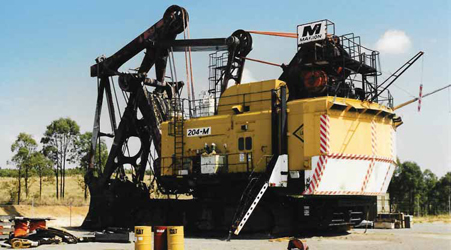
The second event was the recognition of the true potential of Carlin-type gold deposits. While gold had been mined in Nevada from the 1880s, it was not until the 1960s that Newmont latched on to the tonnage potential of its Carlin deposit. And it was not until the mid-1980s, at a time when I was just beginning my career as a mining writer, with Barrick’s acquisition of the Goldstrike property, and the realization that the near-surface deposits were far from the whole story, that the true significance of this type of deposit became clear.
Along with the development of mines hosted in Carlin-type deposits came the expansion of heap-leaching as a mainstay gold-recovery technology in its own right. True, the concept was nothing new, but until the late 1960s, its application had mostly been in copper mine dumps. The use of heap-leaching for gold recovery took off as more mines came on stream, first in Nevada, then elsewhere in the world where the ore was amenable.
That is not to say, of course, that it was an unqualified success. In some cases, it was a steep learning curve, especially in terms of liner construction and reliability, the preparation of the ore before placement, and the effects of the local weather on the process. Nonetheless, the proof that heap-leaching offers a viable way of recovering gold from low-grade ores comes from its current use worldwide, with commercial bio-leaching for gold and other metals having been developed as a spin-off from the original concept.
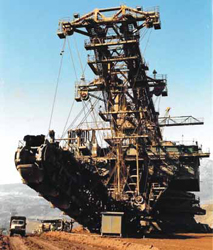
Clearly, such injury and death rates were unacceptable, and were the driving force behind the long-term effort to make mining safer and more productive, both underground and on surface. Over the past 60 years, mechanization — and more recently automation — has cut the physical workload on the individual miner like never before, and has made mining safer in a way that would have been inconceivable in the early 1950s.
The first time I encountered really big mining equipment was while working in Zambia in the 1970s; the Chingola open-pit used 200-ton Lectra Hauls. Back in the U.K. a few years later, the Poclain 1000s used for open-cast coal mining were the biggest hydraulic excavators then available, matched with 50- ton haulers. Subsequent development of hydraulic excavator technology has made these machines mainstream for use with the largest trucks on the market.
And with each step-change in shovel and truck capacities have come new challenges, especially in more remote operations. If working conditions are not attractive for people, despite the cash rewards, then removing them from the machine altogether has been the logical next step.
Yet this has only been achievable with the advances made in computing and communications technology. At university in the 1960s, there was one punchedcard computer, and it is easy to forget that widespread PC ownership did not come in until the 1990s. As for GPS, public-access systems were also a 1990s innovation, and it has taken equipment manufacturers time and investment to weld the technologies together to create today’s autonomous vehicle capabilities.
The other major change in operating practice since the 1950s has not had so much to do with equipment, but how a mine co-exists with its environment, both geographical and social. The “dig-it-deep, tip-it-high, and walk away” approach is neither acceptable nor sustainable (to use the current buzzword), and the mining industry has been regulated into adopting new ways of doing business.
The Big Mistakes
Mining has always been about evaluating
and minimizing risk, whether it relates
to politics, economics, geology or operations.
Major investment debacles are
fortunately few and far between, so when
they do occur, they tend to stand out.
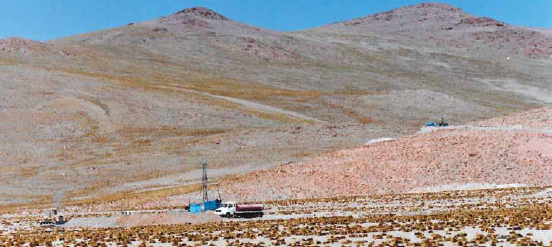
However, it was not too long before the oil execs had realized the error of their judgment, and began hiving off their mineral operations as fast as they could. Rio Tinto was the biggest beneficiary, when it took over BP’s minerals business. A couple of oil companies did hang in there: Exxon bought the Disputada copper mines in Chile in 1978 and sold them to Anglo American in 2002, while Chevron finally quit the U.S. coal business in 2011, and ended molybdenum production in New Mexico in 2014.
And there have been some technical mistakes as well. BHP Billiton’s decision in 2005 to write off its entire $2.4 billion investment in the Boodarie hot briquetted iron (HBI) plant in Western Australia followed just three years of operation. This was three years more than BHPB’s return from its $410 million investment in its HBI joint venture in Venezuela, which it also wrote off.
On the corporate level, one has to question the wisdom of Rio Tinto’s strategy in paying the eye-watering $38 billion for Alcan in 2007 (only $11 billion more than Alcoa was bidding). Going back further, the bidding battle between Inco and Falconbridge for Diamond Fields Resources and its Voisey’s Bay nickel property ended up at $4.5 billion, which was a huge sum in 1996. And there have been other expensive “investments,” some presumably pushed through by corporate egos only to be dropped or hived off once the ego had “left the company to pursue other interests.” The really unfortunate aspect, as I see it, was the buyers’ need then to sell off assets that previously had been highly valued, just to reduce their debt burden to something approaching manageability.

It was an insight into how the best-laid plans can go wrong — left parked overnight close to a high wall that collapsed, the machine was not in the best working order when we arrived. And, to add insult to injury, a competitive Demag machine was working like a train on the bench below. A reporting conundrum.
Inevitably, some articles come out better than others, and it is gratifying — albeit rare — to receive feedback from readers, whether of commendation or to correct a point of fact. Some work is also more satisfying, and I have chosen three examples from my portfolio that have given me a particular sense of achievement.
In the early 1990s, Shell, Chevron and Falconbridge were exploring a new copper prospect, high in the Chilean Andes. Each wanted a report for their in-house magazines, written by someone independent. I got the job. Never having been to 4,300- m altitude before, it was a memorable visit, not only for the work being done to evaluate the deposit, but also for the artifacts left behind from vein mining there in the early 20th century. Old food cans, china shards, glass turned purple by the UV. The article duly appeared, illustrated by my photos. The deposit was Collahuasi.
A completely different commission came from IEA Coal Research, in the form of a study on the different social strategies used by various European countries as coal-mining wound down or was closed completely. To say that the British approach to life for miners and their communities after redundancy was little short of scandalous is perhaps an understatement, but it was gratifying to see how some other countries made genuine efforts to maintain social cohesion and find other jobs for those who had been laid off.
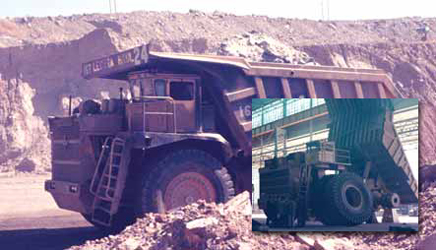
And Some Personal Thoughts ...
Looking back over the last 35 years in
particular, I am still amazed at the mining
industry’s inability to plan for what is traditionally
a cyclical business environment.
Faced as they are with unprecedented
public and financial-sector scrutiny, company
boards still seem hell-bent on both
expansions and acquisitions during business
booms (often saddling themselves
with unsustainable debt in the process),
then being forced to retrench and sell assets
when the downturn comes. It was true
in the 1980s and — as has been only too
apparent recently — it remains true now.
In terms of equipment supply, my perception is that operators’ choice has reduced significantly since the 1980s. This has been due in part to local or regional companies having shut down after their tied markets shrank — remember that Germany, the U.K., France and the Netherlands all had equipment manufacturers supplying their domestic coal industries — and in part to consolidation through acquisitions. Today there are just two international “biggies” for surface mining and underground coal, and two that supply underground hard-rock machines. True, there are still many smaller manufacturers, but their capabilities are often only local, or at best regional. Consolidation has reduced choice and, by inference, competitiveness.
In the late 1980s, I wrote an editorial column expressing concerns about how mining is going to attract the next generation of young professionals who will be needed to keep the industry operating efficiently. I could say the same today. From what I can see, we still need to address young peoples’ perception that mining is not an attractive career. It is, if you are prepared for it. Neither is it helpful to train new engineers at college only for them to defect to the financial sector and become analysts who can effectively make or break an operation without having the hands-on technical understanding of what is involved there.
... to End With
Since announcing my intention to retire,
several people have asked “why?” Without
question, mining writing is not the same
as it was when E&MJ was founded, or
when I started my writing career in 1985.
At that time, mining companies and
equipment manufacturers alike had press
relations and marketing staff who understood
the importance of independent reporting
on their operations and products. Operating companies would organize site
visits for technical journalists — not just
analysts — that would result in an article
covering an operation from soup to nuts.
Their press people knew what represented
value for money for them, and maintained
positive relationships with us in the media
to make sure that it happened.
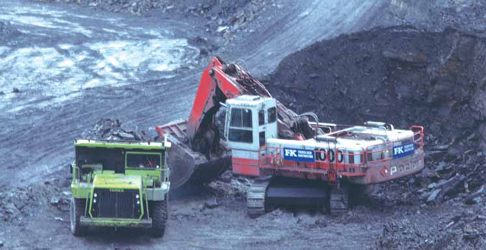
For obvious reasons, equipment manufacturers remained helpful in gaining access to report on mines, but with one proviso: only their equipment can be mentioned, even though competitive machines are on site. Thus, the reader receives a less-than complete picture of what is going on.
The internet has exacerbated the problem. It is ephemeral; what you read one day may produce an “Error 404” message the next. The printed page remains. Yet some companies seem content to post as much (and in some cases, as little) as they like about their activities or products, on the assumption that is enough to satisfy the curiosity of interested readers — be they technically minded or (heaven forbid) even their own shareholders.
I have been fortunate during my career in mining, in industry, consulting and writing, and have enjoyed the places I have visited, and meeting the people who have helped, wherever they have been around the world. My articles have appeared in well over a dozen publications in different countries. I hope that you — as readers — have found them interesting, educational and informative. I have tried to make them so..